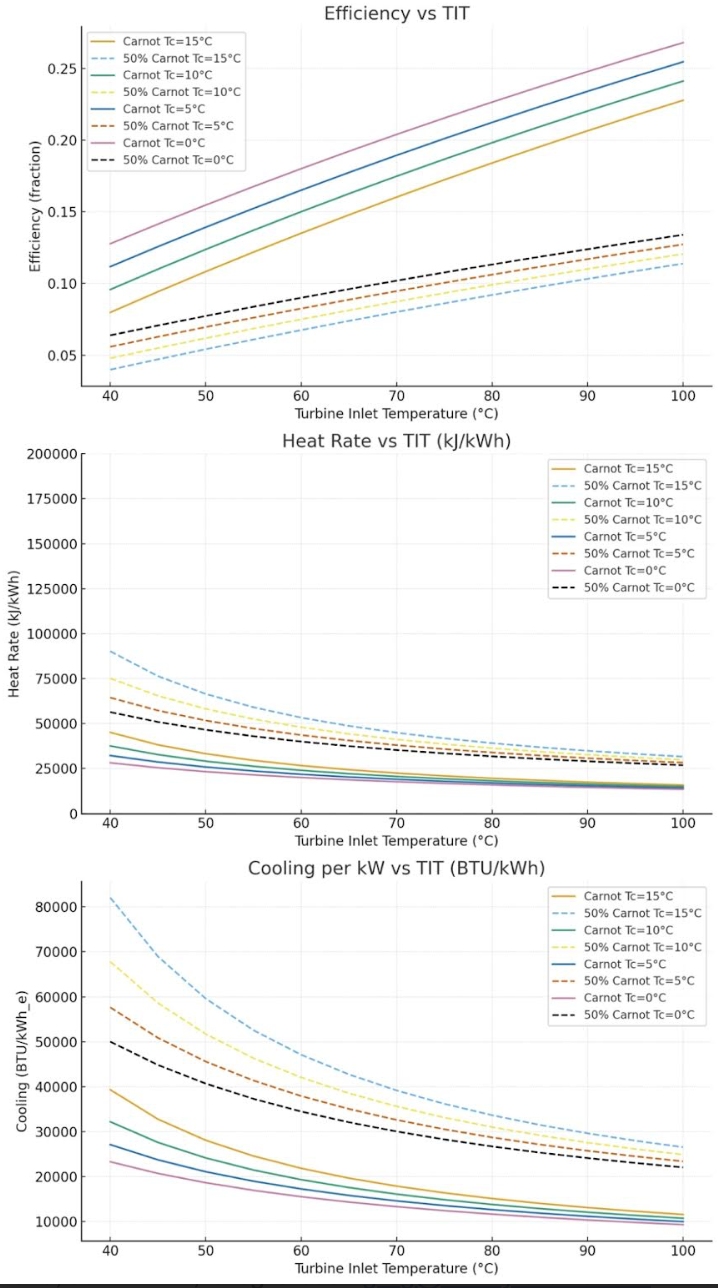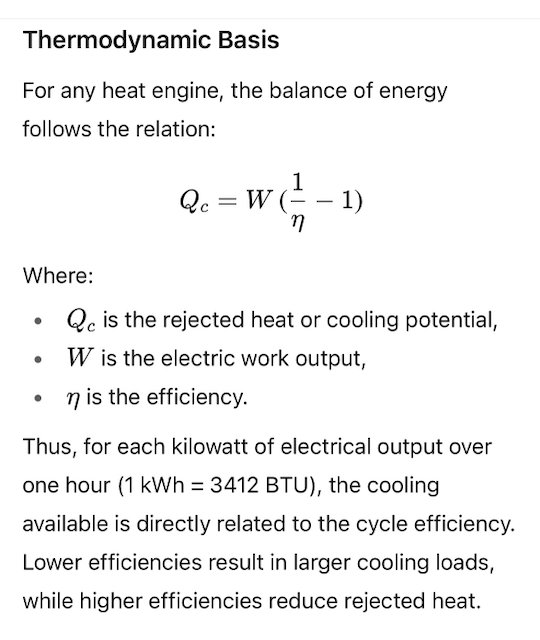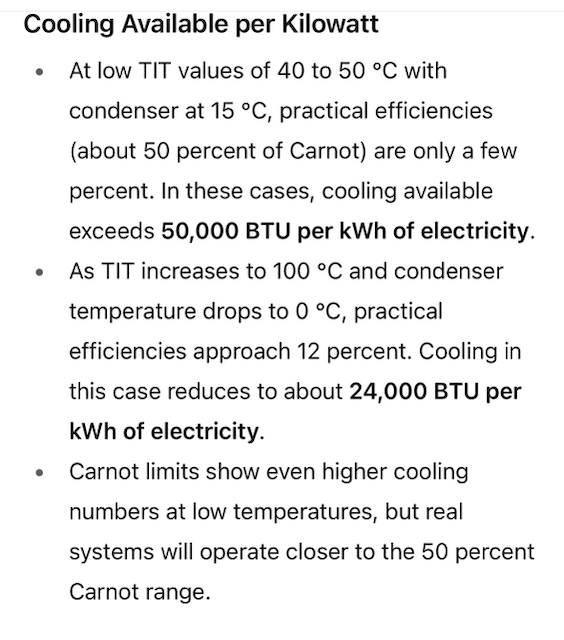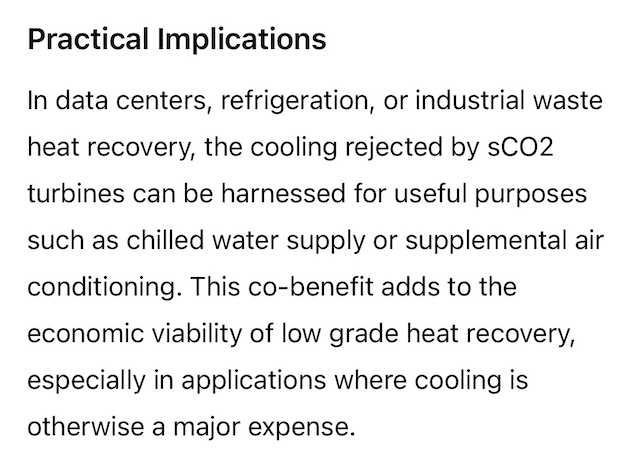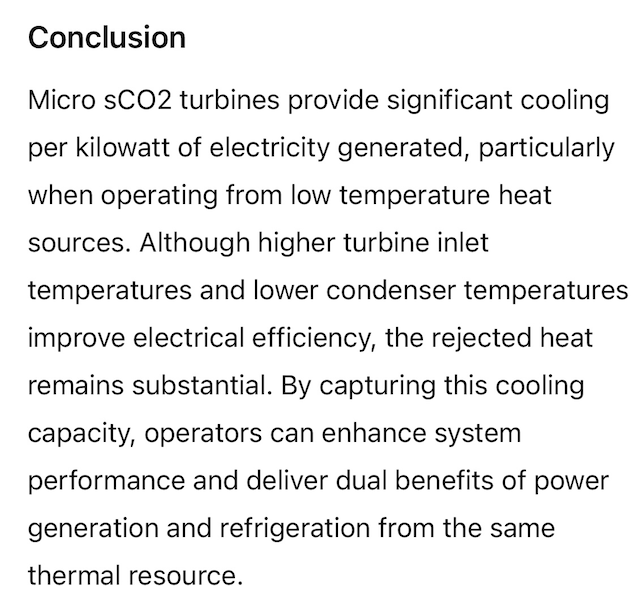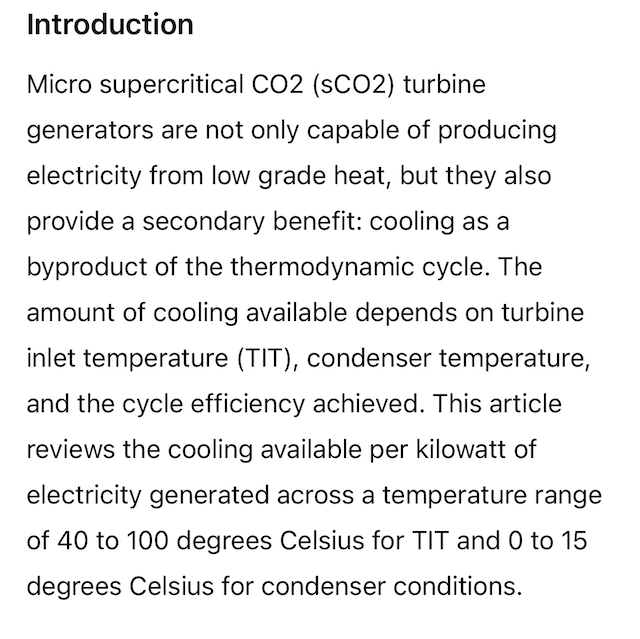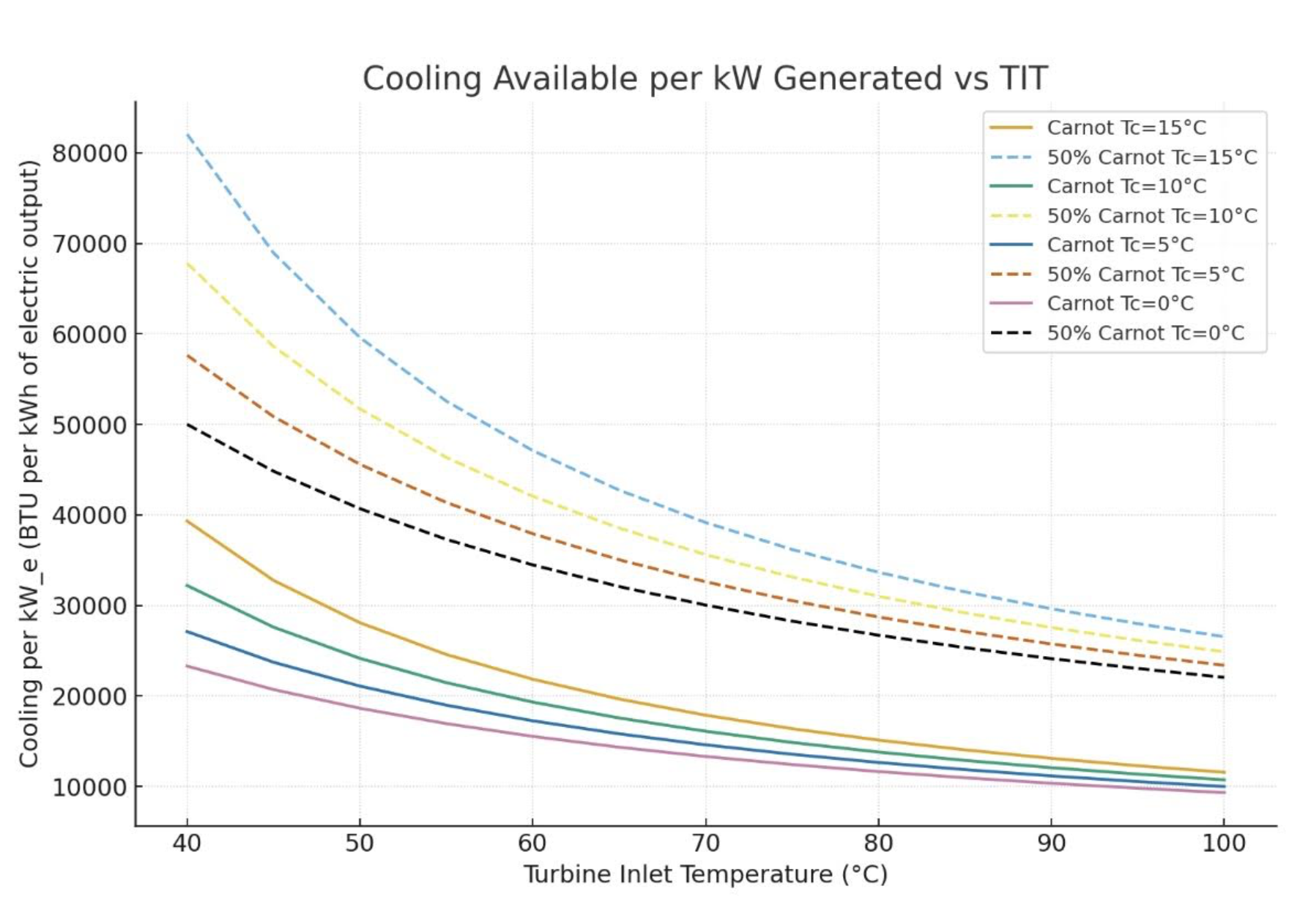
Cooling Potential of Micro Supercritical CO2 Turbines per Kilowatt of Electricity Generated
IntroductionMicro supercritical CO2 (sCO2) turbine generators are not only capable of producing electricity from low grade heat, but they also provide a secondary benefit: cooling as a byproduct of the thermodynamic cycle. The amount of cooling available depends on turbine inlet temperature (TIT), condenser temperature, and the cycle efficiency achieved. This article reviews the cooling available per kilowatt of electricity generated across a temperature range of 40 to 100 degrees Celsius for TIT and 0 to 15 degrees Celsius for condenser conditions.Thermodynamic BasisFor any heat engine, the balance of energy follows the relation:Q_c = W left(frac{1}{eta} • 1right)Where:Q_c is the rejected heat or cooling potential,W is the electric work output,eta is the efficiency.Thus, for each kilowatt of electrical output over one hour (1 kWh = 3412 BTU), the cooling available is directly related to the cycle efficiency. Lower efficiencies result in larger cooling loads, while higher efficiencies reduce rejected heat.Cooling Available per KilowattAt low TIT values of 40 to 50 °C with condenser at 15 °C, practical efficiencies (about 50 percent of Carnot) are only a few percent. In these cases, cooling available exceeds 50,000 BTU per kWh of electricity.As TIT increases to 100 °C and condenser temperature drops to 0 °C, practical efficiencies approach 12 percent. Cooling in this case reduces to about 24,000 BTU per kWh of electricity.Carnot limits show even higher cooling numbers at low temperatures, but real systems will operate closer to the 50 percent Carnot range.Impact of Condenser TemperatureThe condenser temperature plays a critical role. Lowering it from 15 °C to 0 °C improves efficiency and reduces the ratio of cooling to electricity. While this reduces cooling per kilowatt, it raises overall power generation efficiency. The tradeoff highlights how site-specific cooling strategies determine both the value of electricity and useful cold production.Practical ImplicationsIn data centers, refrigeration, or industrial waste heat recovery, the cooling rejected by sCO2 turbines can be harnessed for useful purposes such as chilled water supply or supplemental air conditioning. This co-benefit adds to the economic viability of low grade heat recovery, especially in applications where cooling is otherwise a major expense.ConclusionMicro sCO2 turbines provide significant cooling per kilowatt of electricity generated, particularly when operating from low temperature heat sources. Although higher turbine inlet temperatures and lower condenser temperatures improve electrical efficiency, the rejected heat remains substantial. By capturing this cooling capacity, operators can enhance system performance and deliver dual benefits of power generation and refrigeration from the same thermal resource.

